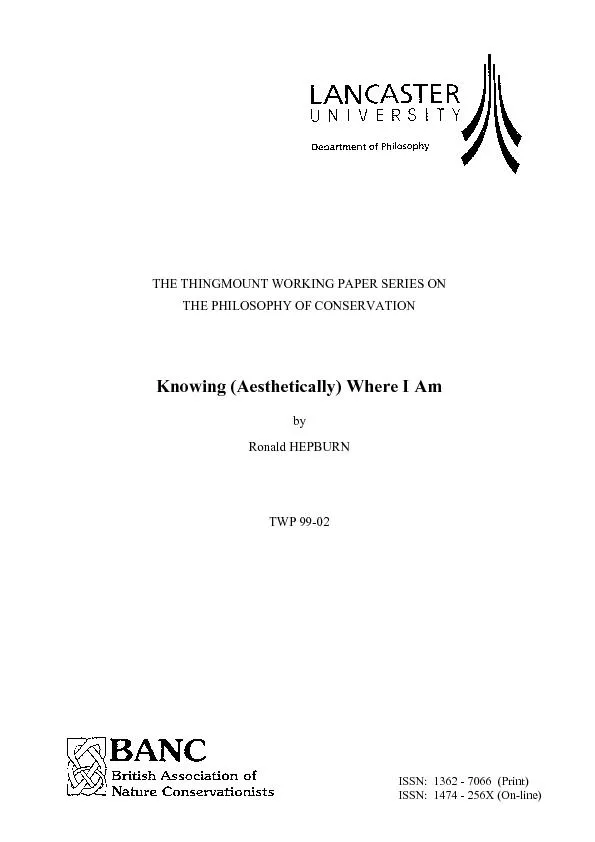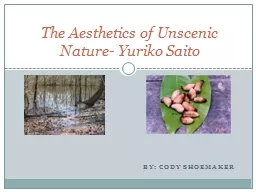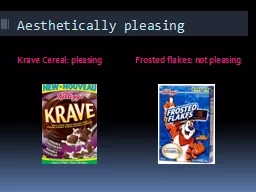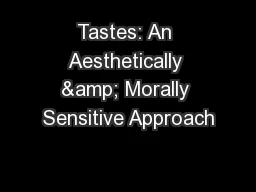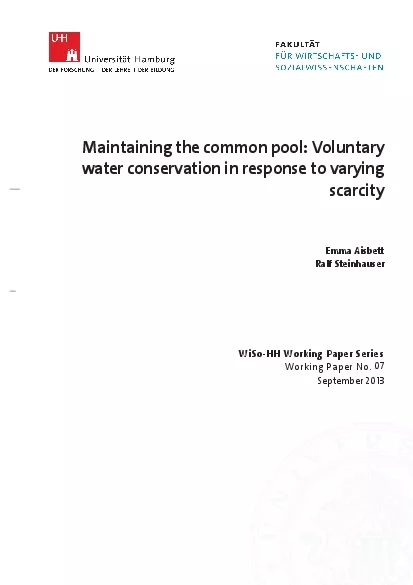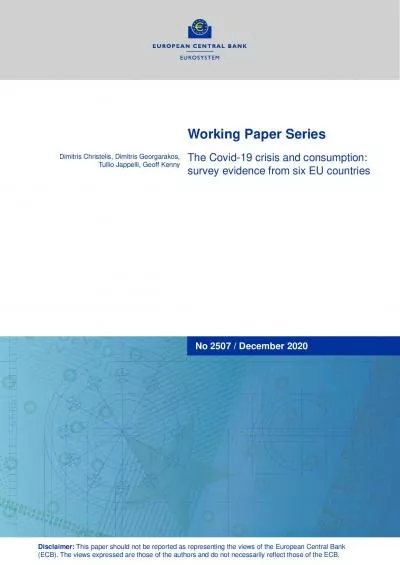PDF-THE THINGMOUNT WORKING PAPER SERIES ON Knowing (Aesthetically) Where I
Author : danika-pritchard | Published Date : 2016-10-03
ISSN 1362 7066 Print ISSN 1474 256X Online Ronald Hepburn Knowing Aesthetically Where I Am Page 1 R
Presentation Embed Code
Download Presentation
Download Presentation The PPT/PDF document "THE THINGMOUNT WORKING PAPER SERIES ON K..." is the property of its rightful owner. Permission is granted to download and print the materials on this website for personal, non-commercial use only, and to display it on your personal computer provided you do not modify the materials and that you retain all copyright notices contained in the materials. By downloading content from our website, you accept the terms of this agreement.
THE THINGMOUNT WORKING PAPER SERIES ON Knowing (Aesthetically) Where I: Transcript
Download Rules Of Document
"THE THINGMOUNT WORKING PAPER SERIES ON Knowing (Aesthetically) Where I"The content belongs to its owner. You may download and print it for personal use, without modification, and keep all copyright notices. By downloading, you agree to these terms.
Related Documents

